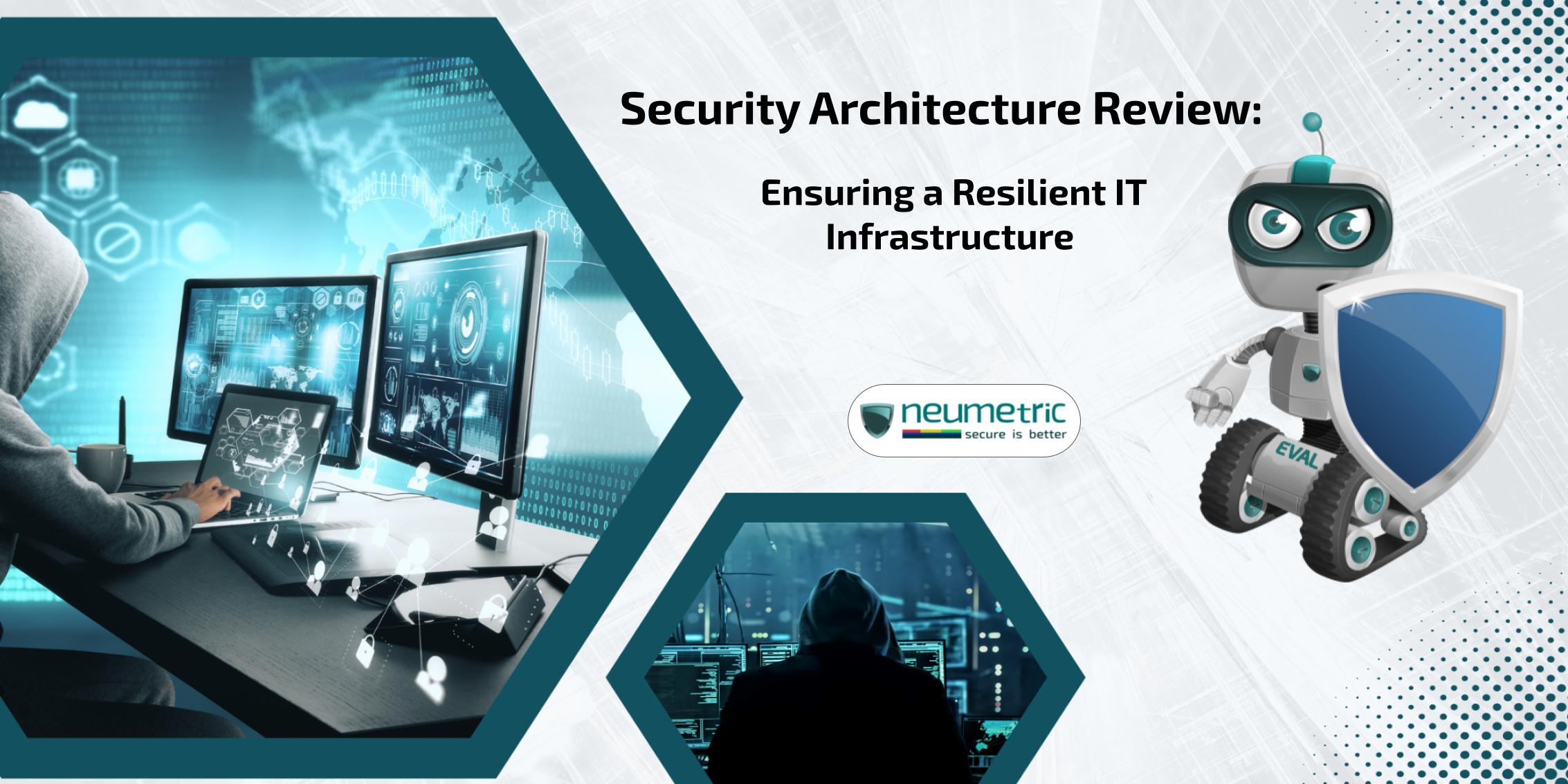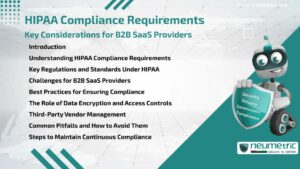Table of Contents
ToggleIntroduction
In today’s rapidly evolving digital landscape, organizations face an ever-increasing array of cyber threats. As businesses become more reliant on technology, the need for robust security measures has never been more critical. At the heart of this defense lies the security architecture review – a comprehensive process that evaluates & strengthens an organization’s IT infrastructure against potential vulnerabilities & attacks.
This journal will delve deep into the world of security architecture review, exploring its importance, methodologies & best practices. We’ll examine how this process can safeguard your digital assets, ensure compliance with industry regulations & provide a solid foundation for your organization’s growth & success in the digital age.
Understanding Security Architecture Review
Before we dive into the intricacies of the security architecture review process, it’s essential to grasp its fundamental concept & significance in the broader context of cybersecurity.
Defining Security Architecture Review
A security architecture review is a systematic evaluation of an organization’s IT infrastructure, policies & procedures to identify vulnerabilities, assess risks & ensure that security controls are aligned with business objectives. This process involves a thorough examination of the entire IT ecosystem, including networks, applications, data storage systems & user access management.
The Importance of Regular Security Architecture Reviews
In an era where cyber threats are constantly evolving, conducting regular security architecture reviews is crucial for several reasons:
- Proactive threat mitigation: By identifying vulnerabilities before they can be exploited, organizations can stay one step ahead of potential attackers.
- Compliance assurance: Many organizations are subject to strict regulatory requirements. Regular reviews help ensure ongoing compliance with these standards.
- Optimized resource allocation: Reviews can highlight areas where security investments are most needed, allowing for more efficient use of resources.
- Improved incident response: A well-understood security architecture enables faster & more effective responses to security incidents.
- Business alignment: Reviews ensure that security measures support rather than hinder business objectives.
The Security Architecture Review Process
A comprehensive security architecture review follows a structured approach to evaluate & enhance an organization’s cybersecurity posture. Just break down this process into its small key components.
Planning & Scoping
The first step in any security architecture review is to define its scope & objectives. This involves:
- Identifying key stakeholders & their roles in the review process.
- Determining the systems, applications & networks to be included in the review.
- Establishing timelines & milestones for the review process.
- Defining the specific goals & expected outcomes of the review.
Information Gathering
Once the scope is defined, the next step is to collect all relevant information about the organization’s IT infrastructure. This may include:
- Network diagrams & system architectures
- Security policies & procedures
- Asset inventories
- Previous audit reports & risk assessments
- Compliance requirements & industry standards
Architecture Analysis
With all necessary information in hand, the review team can begin a thorough analysis of the security architecture. This phase typically involves:
- Reviewing network segmentation & access controls
- Evaluating data flow & storage practices
- Assessing authentication & authorization mechanisms
- Examining encryption protocols & key management
- Analyzing incident response & business continuity plans
Threat Modeling
An essential component of the security architecture review is threat modeling. This process involves:
- Identifying potential threats to the organization’s assets
- Assessing the likelihood & potential impact of these threats
- Mapping threats to existing security controls
- Identifying gaps in current security measures
Vulnerability Assessment
Following threat modeling, a vulnerability assessment is conducted to identify specific weaknesses in the security architecture. This may include:
- Automated vulnerability scans of networks & applications
- Manual penetration testing to simulate real-world attack scenarios
- Code reviews for custom applications
- Social engineering tests to assess human factors in security
Risk Analysis
Based on the findings from the threat modeling & vulnerability assessment, a comprehensive risk analysis is performed. This involves:
- Quantifying the potential impact of identified risks
- Prioritizing risks based on the likelihood & potential impact
- Evaluating the effectiveness of already existing controls in mitigating risks
- Identifying areas where additional controls or improvements are needed
Recommendations & Reporting
The final stage of the security architecture review process is to compile findings & recommendations into a comprehensive report. This report typically includes:
- An executive summary of key findings & risks
- Detailed analysis of the current security architecture
- Identified vulnerabilities & associated risks
- Prioritized recommendations for improving security posture
- A roadmap for implementing recommended changes
Best Practices for Effective Security Architecture Reviews
To maximize the value of your security architecture review, consider the following best practices:
- Engage all stakeholders: Ensure that all relevant parties, from IT staff to executive leadership, are involved in the review process.
- Adopt a risk-based approach: Focus on identifying & addressing the most critical risks to your organization’s assets & operations.
- Leverage automation: Use automated tools & processes where possible to increase efficiency & accuracy in data collection & analysis.
- Consider the human factor: Don’t overlook the role of people & processes in your security architecture. Include assessments of security awareness & training programs.
- Stay current with industry trends: Ensure your review process incorporates the latest threat intelligence & security best practices.
- Document thoroughly: Maintain detailed documentation of your security architecture & review findings to support ongoing improvements & compliance efforts.
- Conduct regular reviews: Security architecture reviews should not be one-time events. Establish a regular cadence for reviews to keep pace with evolving threats & business needs.
Challenges in Security Architecture Review
While security architecture reviews are crucial for maintaining a robust cybersecurity posture, they come with their own set of challenges:
- Complexity of modern IT environments: As organizations adopt cloud services, IoT devices & other emerging technologies, security architectures become increasingly complex & difficult to assess comprehensively.
- Resource constraints: Conducting thorough reviews requires significant time & expertise, which may strain already limited IT resources.
- Rapidly evolving threat landscape: The fast pace of change in cyber threats can make it challenging to keep security architectures up-to-date.
- Balancing security & usability: Overly restrictive security measures can impede business operations, making it crucial to find the right balance.
- Organizational resistance: Some stakeholders may resist changes recommended by the review, particularly if they impact established processes or require significant investment.
The Future of Security Architecture Review
As technology continues to evolve, so too will the practice of security architecture review. Here are some trends shaping the future of this critical process:
- Artificial Intelligence [AI] & Machine Learning [ML]: Advanced analytics will play an increasingly important role in identifying patterns & anomalies in security data.
- Continuous assessment: Rather than periodic reviews, organizations will move towards continuous monitoring & assessment of their security architecture.
- Zero Trust architectures: The principle of “never trust, always verify” will become more prevalent, requiring new approaches to security architecture review.
- Cloud-native security: As more organizations adopt cloud services, security architecture reviews will need to adapt to assess cloud-native security controls & shared responsibility models.
- Integration with DevOps: Security architecture reviews will become more tightly integrated with DevOps processes, supporting the shift towards “DevSecOps” practices.
Conclusion
In an era where digital assets are the lifeblood of many organizations, a robust security architecture is not just a nice-to-have – it’s a necessity. The security architecture review process provides a structured approach to evaluating & enhancing an organization’s cybersecurity posture, ensuring that defenses are up to the task of protecting against ever-evolving threats.
By following best practices, addressing challenges head-on & staying abreast of emerging trends, organizations can use security architecture reviews as a powerful tool to fortify their digital fortresses. Remember, in the world of cybersecurity, standing still is moving backward. Regular, thorough security architecture reviews are your best bet for staying one step ahead of potential attackers & safeguarding your organization’s future in the digital age.
As you embark on your next security architecture review, consider it not just as a compliance checkbox, but as a strategic investment in your organization’s resilience & longevity. In doing so, you’ll be laying the foundation for a secure, adaptable & thriving digital enterprise.
Key Takeaways
- Security architecture reviews are essential for maintaining a robust & resilient IT infrastructure in the face of evolving cyber threats.
- The review process involves comprehensive assessment of an organization’s entire IT ecosystem, including networks, applications & data storage systems.
- Regular reviews help organizations proactively mitigate threats, ensure compliance, optimize resource allocation & improve incident response capabilities.
- Best practices include engaging all stakeholders, adopting a risk-based approach, leveraging automation & conducting regular reviews.
- Challenges in security architecture review include the complexity of modern IT environments, resource constraints & balancing security with usability.
- The future of security architecture review will likely involve greater use of AI & machine learning, continuous assessment & integration with DevOps practices.
Frequently Asked Questions [FAQ]
How often should we conduct a security architecture review?
The frequency of security architecture reviews depends on various factors, including the size of your organization, the complexity of your IT infrastructure & the rate of change in your business environment. As a general guideline, comprehensive reviews should be conducted at least annually, with more frequent targeted reviews of specific systems or processes as needed.
Who should be involved in a security architecture review?
A security architecture review typically involves a cross-functional team, including IT security professionals, network administrators, application developers, compliance officers & business stakeholders. External security consultants may also be brought in to provide an objective perspective & specialized expertise.
How does a security architecture review differ from a penetration test?
While both are important components of a comprehensive security program, they serve different purposes. A security architecture review is a holistic assessment of an organization’s overall security posture, including policies, procedures & technical controls. A penetration test, on the other hand, is a focused attempt to identify & exploit specific vulnerabilities in systems or applications.
What are the key deliverables of a security architecture review?
The main deliverables of a security architecture review typically include a comprehensive report detailing the current state of the security architecture, identified vulnerabilities & risks & prioritized recommendations for improvement. This may be accompanied by a roadmap for implementing recommended changes & metrics for measuring progress.
How can we measure the success of our security architecture review process?
The success of a security architecture review can be measured through various metrics, including the number & severity of vulnerabilities identified & remediated, improvements in compliance scores, reduction in security incidents & the overall maturity level of the security program. It’s also important to track the implementation of recommended changes & their impact on the organization’s risk posture.





